Finding the light at Candili
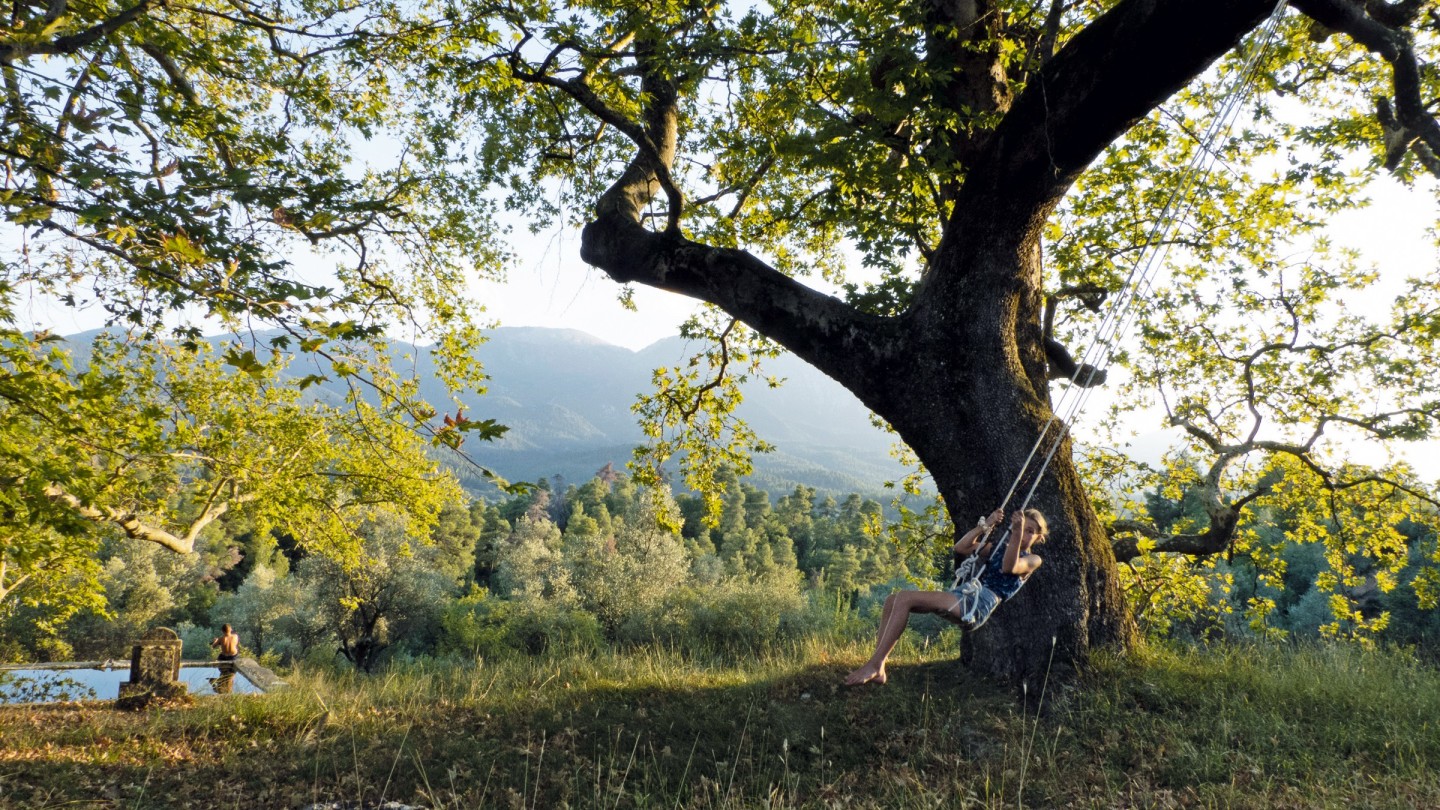
Roula Khalaf, Editor of the FT, selects her favourite stories in this weekly newsletter.
Candili is a good place to rest. It has been owned by the Noel-Baker family for nearly 200 years, and on arriving one is immediately met with a sense of removal and peace that belies the fact that it is only a two-hour drive north of Athens.
We travelled here – myself, my partner Sophie and three of her children: George, 13; Olive, 12; and Albert, 10 – partly for a holiday, partly on a working trip. Sophie, a ceramicist, had been invited by the estate’s custodian, Philip Noel-Baker, to stay on a pottery residency. There is an artisanal tradition at Candili that goes way back; and fortunately for us, an enduring hospitality too – Philip did not baulk at the rest of the family tagging along for the ride.
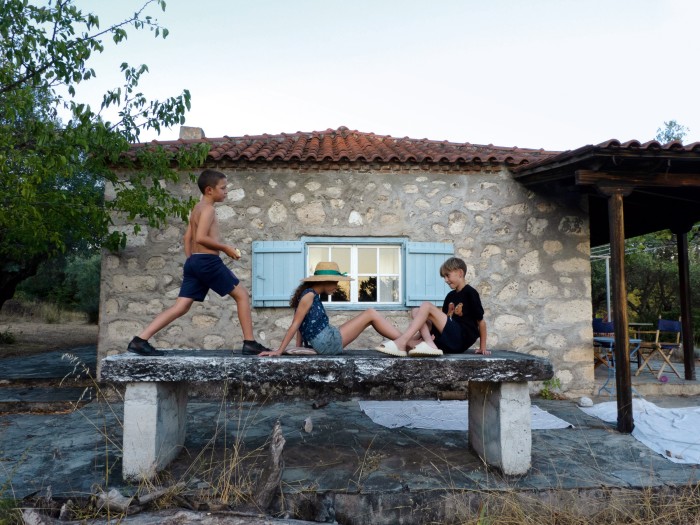
The estate lies on the little-known island of Evia, the second largest rock in the Aegean Sea, extending for more than 100 miles from north-west to south-east, roughly parallel to the Greek mainland. Two bridges connect the two; the water body between them is known as the Euripus Strait, which at its narrowest spans just 40m. Perhaps it is this sense of not quite being a proper island that has saved it from the tourist boot.
Our first evening here set the tone for our entire stay. We arrived by taxi and, having been shown our rooms and dumped our suitcases, quickly sought the relief of water. Half-submerged in a pool at the back of the house, we stood listening to the evensong of cicadas, the ring-cycle of insect life. As the air cooled, I looked up at the encircling mountains and wondered just how hot those peaks had become during the warmest part of the day. Poor, dear rock, I thought, while the house stared back, blank and indifferent.
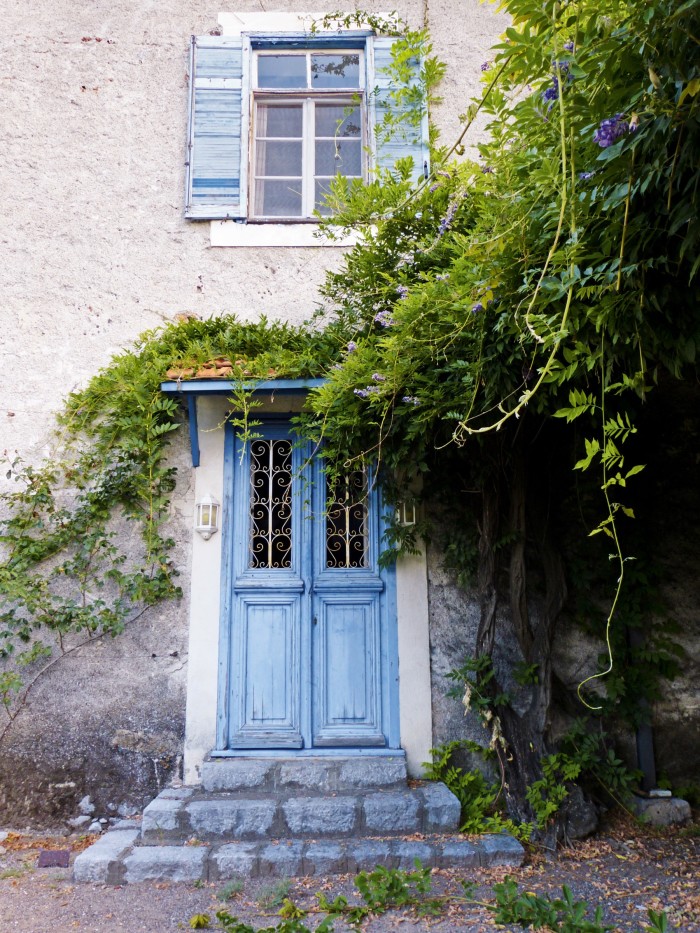
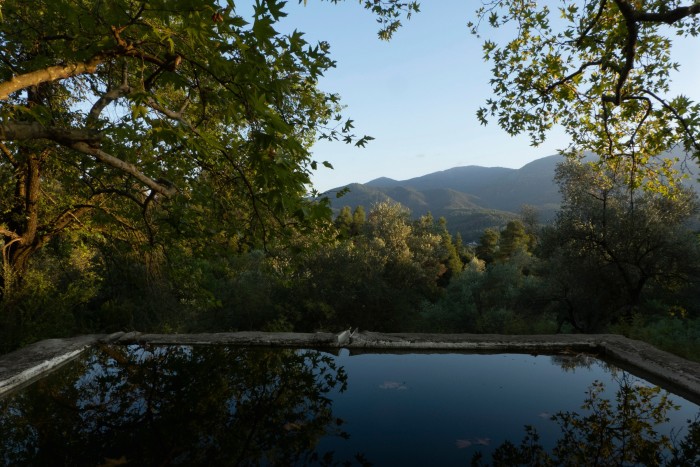
There is a haunting beauty at Candili, a time-worn charm; across the estate, in every nook and cranny, evidence of an educated eye. Past guests include Leonard and Virginia Woolf; Edward Lear too. And other ghosts; the land on which the estate now stands was bought by Philip’s great-great-grandfather, Edward Noel, from the departing Ottoman Turks. Noel was a cousin of Lady Byron – once married to the Philhellene and poet Lord Byron, who met his end at Missolonghi in 1824. It was she who helped Edward Noel purchase the land in 1832.
The young Englishman’s primary reason for visiting Greece was to investigate the circumstances around Byron’s death. But there were other forces at play. Noel – himself a poet and painter – was one of that band of educated and charged young men swept up in the Philhellene movement of the time. The thrust of its energy was focused in helping to reinstate the spirit and values of classical Greece. One noble aim was the closing of the gap between rich and poor, through education and mutual work in agriculture. In the loamy soils of the valley on which Candili now lies, Noel saw the opportunity to buy a large swath of land for not very much. He wanted to build a school of agriculture here and help the Greek peasants who had suffered under the yoke of the Turks; to teach them modern farming techniques and improve lives.
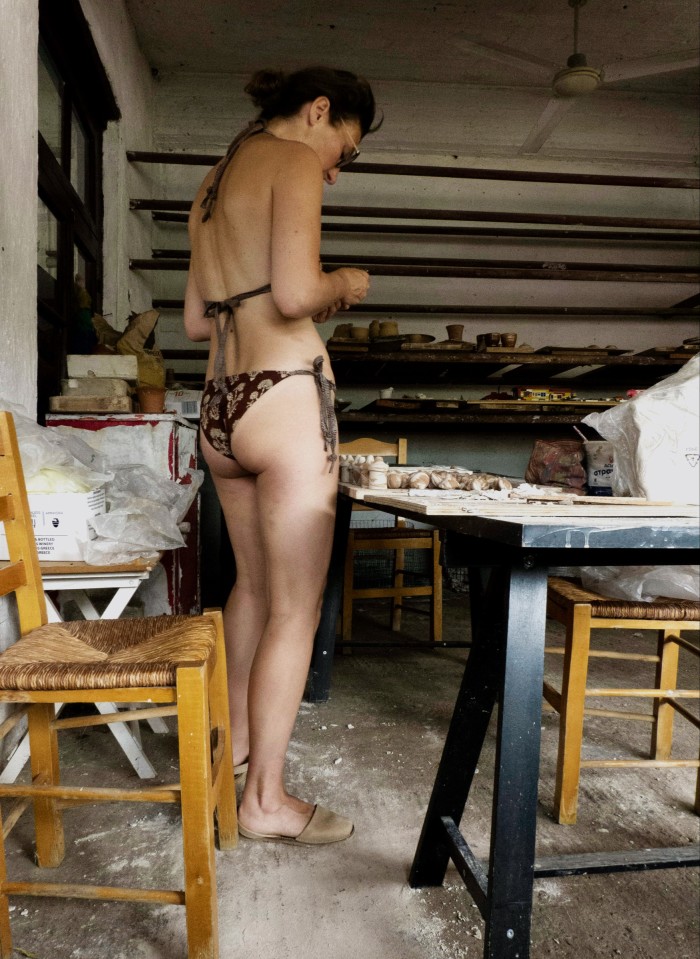
Entering the courtyard at Candili today, one still sees the footprint of that farm. The main house stands firm in the sun, directly opposite the entrance, with a dying plane tree, centrepiece, in crucifix form. The family house is not the original: the first building was blown up by Italian soldiers billeted here during the second world war – a drunken evening and some clumsy fire-management culminated in a blaze spreading from a drawing room. The only surviving remnant was the front door, which was blown off its hinges. When the Noels returned to the estate after the war, they rebuilt the house close to the original plan. The front door was patched up and rehung in the new entrance. It remains there today.
With so colourful a history, it is only appropriate that Candili today sings with literal colour. The white stucco of the house is offset by the faded cornflower blue of its window shutters. Dancing in corners of the yard: gangs of pink oleanders and orange cosmos. On the south side of the property is a pergola covered in the lucent green of grapevine leaves, while along a raised gallery to the north, banister rails and cross beams are stained a mellow black. These aged timbers are warped and twisted; pleasingly, to my eye at least, Candili is not a place of straight lines.
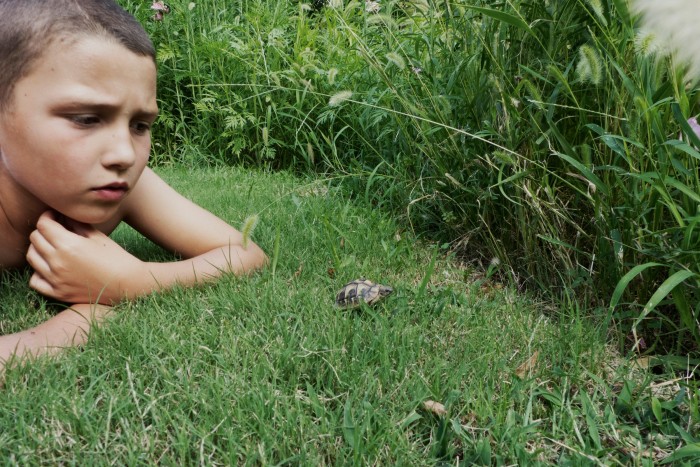
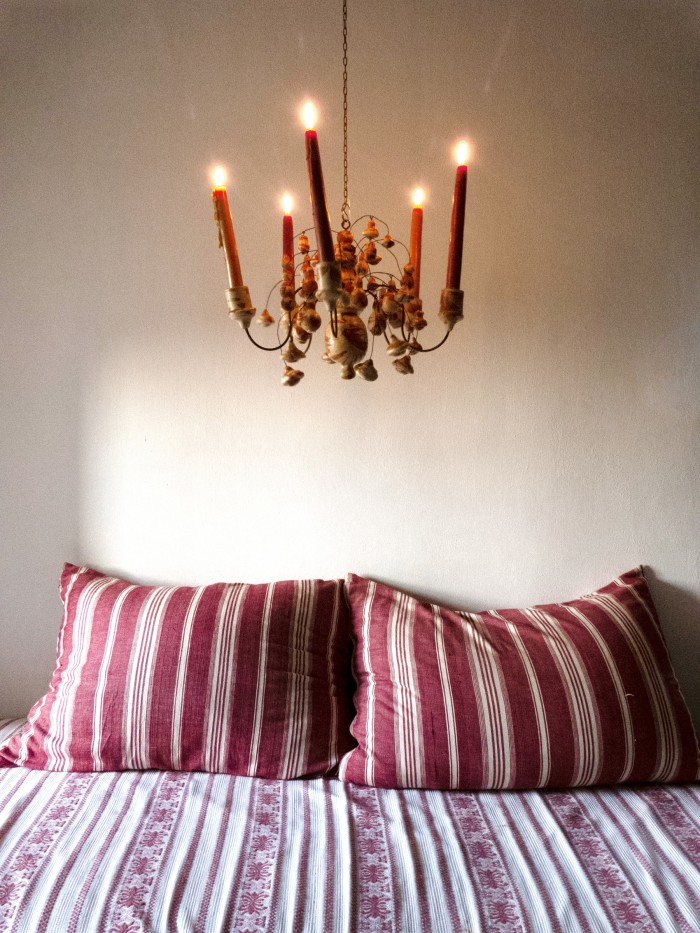
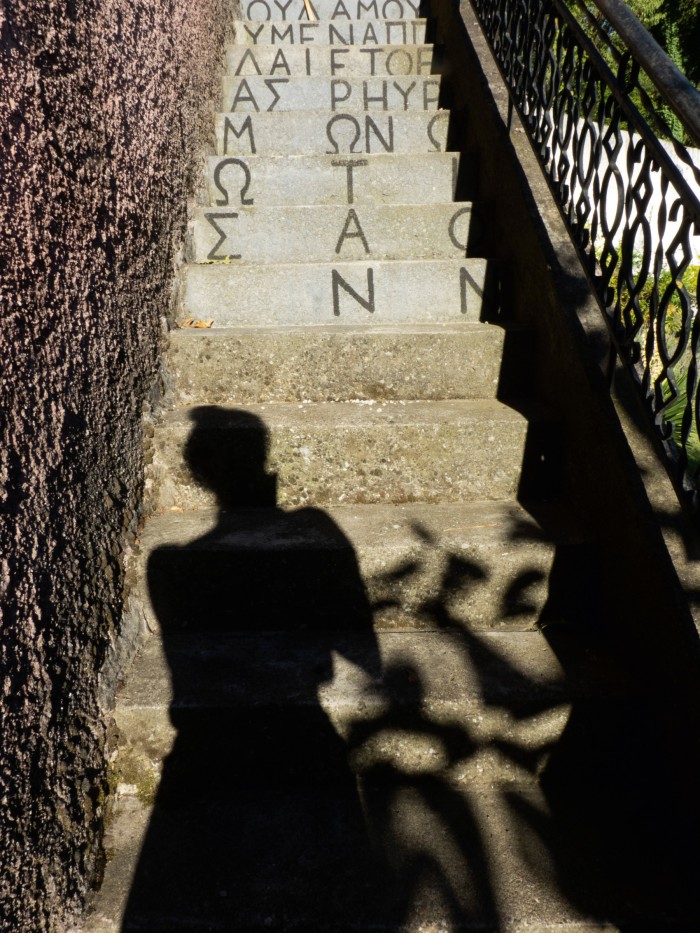
Adjacent to the house is a long building consisting of two floors. The ground floor housed a workshop for carpentry, a smithy, storerooms for the estate’s many beehives (honey having been a major product of Candili’s forests) and a laundry where water was heated in copper cauldrons to boil the household linen. What was given over entirely to hard work has now been converted into spaces that serve rest. The guest rooms are charming. Through the window, the rippling heat of midday presses down, buckling the cypresses. But inside the thick white walls, it remains cool with the still air of a Hammershøi painting. Outside, there is a communal eating area where guests sit at long tables under the shade of mulberry trees. The first week we shared these settings with a vacationing British-Indian family numbering 30. The second week, a party of foreign scholars studying ancient Greek. The food was consistently wonderful, much of the raw material from Candili’s own kitchen garden.
At home, I work partly as a forester, partly as a writer. The landscape here stirred interest in both halves of me. Mountains encircle Candili; high forest covers the rock. Meeting one’s gaze are Greek fir, black pine, Aleppo pine and the mellower, broadleaf green of oak. Many of the plane trees – another arboreal staple of Evia – are dying. Like the ailing courtyard specimen, they wither and become white skeletons that sun and bird and insect will slowly unpick. My eyes trace a line of standing deadwood along the river: a trail of linear disease. To raise my spirits, I look up. On the higher slopes, there is deep contrast between the full, green dark of the forest and the lilac mountain tops beyond. Compensation enough.
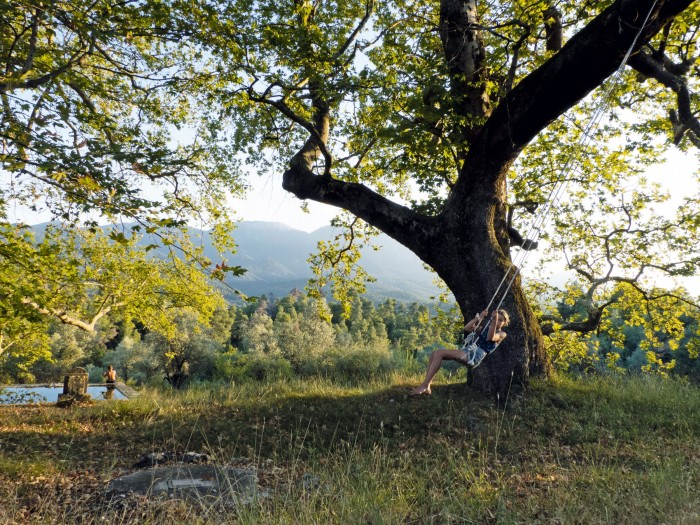
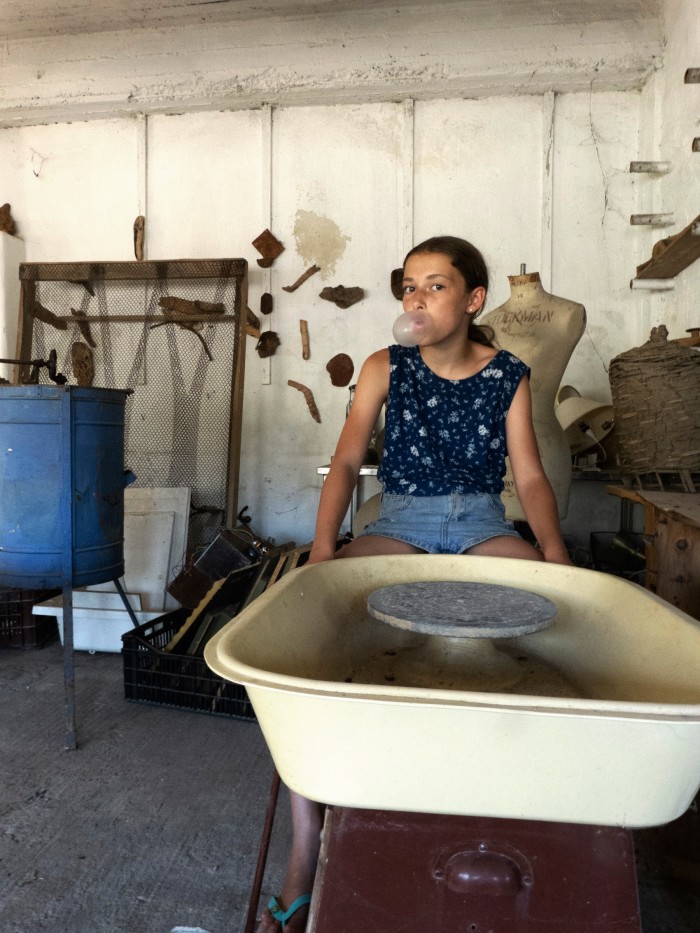
Before Candili, Sophie sits at her kitchen table. It is December. We are in a crumbling Fenland manor house – cold is not the word. The artist sits sketching, trying to shape a direction for her summer residency. Above her hangs a five-armed chandelier, age unknown. Made from wood and wire, and painted a dull gold, it consists of dozens of small parts with cups for five candles. The shapes are playful: skittles, pears and cymbals – simultaneously a work of folk art and magic. Sophie regards the kitchen spirit, noticing charred edges to the candle cups from errant flames. There is a light-bulb moment. She will make it in clay; it would be better off in clay. The idea for her residency project is seeded.
In Sophie’s own words, to make the most of a residency you need preparedness. In this spirit, she gets busy. From drawings, moulds are created, and each component of the chandelier first turned on a wood lathe. The results are large, white-plaster bricks inset with odd shapes, which are packed between smalls and snorkels; not your everyday holiday luggage. Before Sophie leaves for Greece her final job is to order clay.
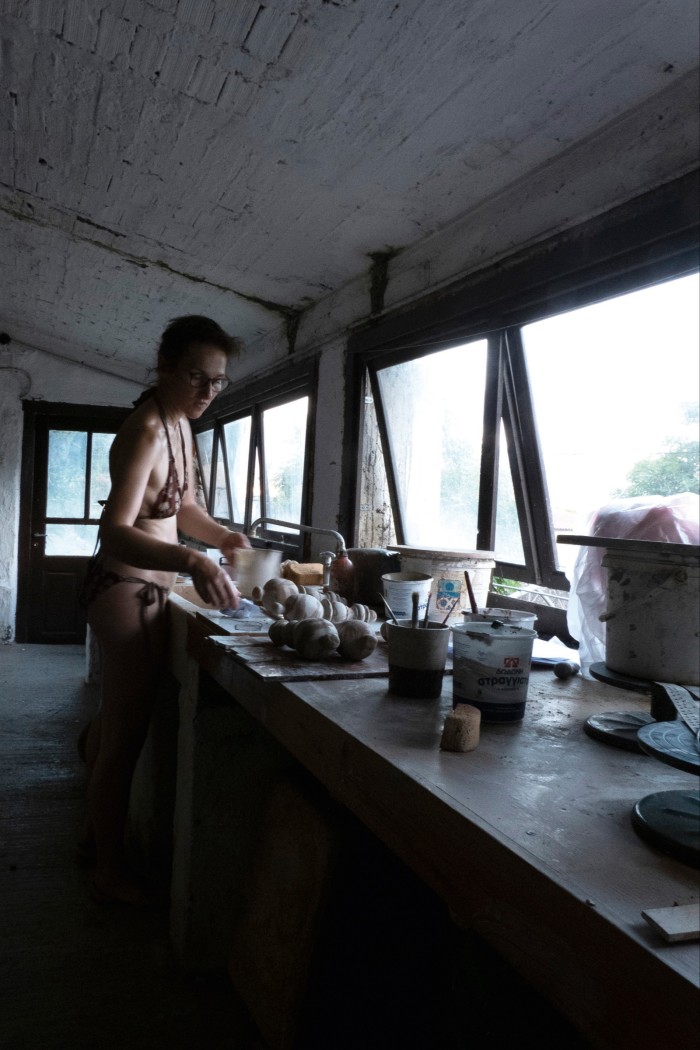
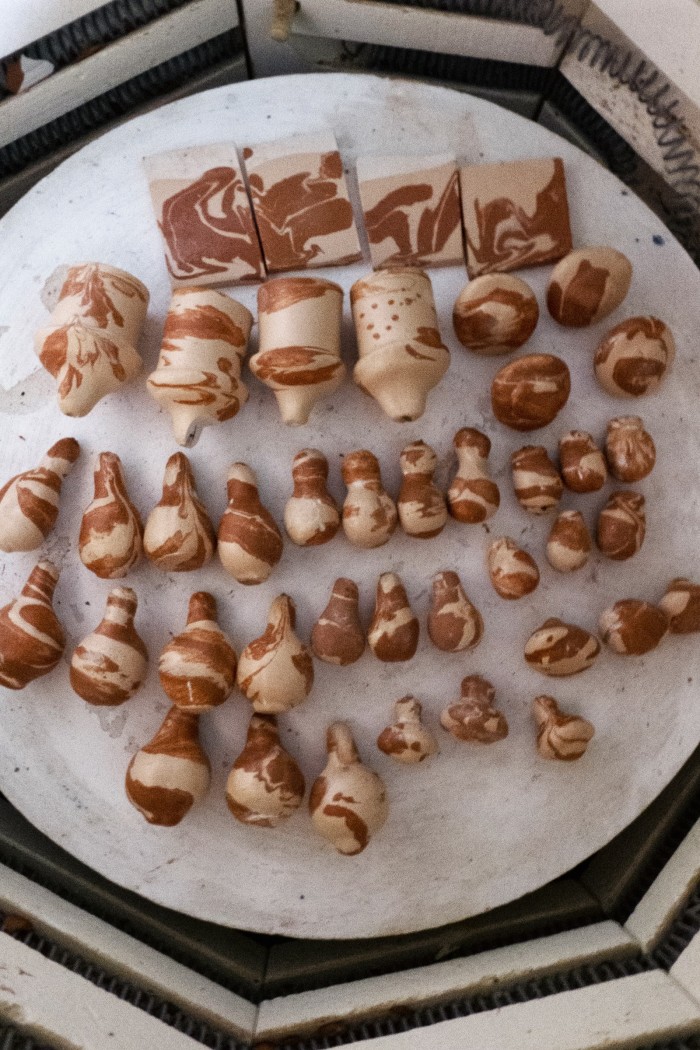
At Candili, on a terrace below the old stable sits the pottery studio. Once a lambing shed, it is now a birthing place for ideas. For the next month, this is Sophie’s space and the heartbeat of her Candili stay. The residency is an opportunity to learn. However well-prepared you are, there will always be challenges; hers comes in the form of a heatwave meteorologists dub “Cerberus”. Working clay in 43-degree temperatures is new territory for the Fenland potter.
But she perseveres. Using established techniques made popular in England in the mid-18th century, Sophie covers the terracotta shapes in liquid clay or “slip” before shaking or “joggling” them to create crazed, marbled seams of colour – no two pieces are ever the same. These 50 components will be suspended on wire to dress the chandelier’s central column. The final effect will look something like a trippy, spreading parkland tree.
But I will let Candili have the final say. While Sophie works in the heat of the old lambing shed, dressed in a string bikini, she learns the meaning of the estate’s name. The word refers to the candles and vigil lamps lit in Greek churches. She is stunned, hushed, and smiles to herself as perspiration trickles down her nose. Only in such a place, pressed in by forests and mountains, and stalked by the ghosts of poets and old soldiers, could such sublime serendipity occur. The 1690 Candili chandelier had to be made.
The 1690 Candili chandelier is available from 1690store.com. For more information on Candili, go to candili.gr or, to book, email stay@candili.gr

Comments